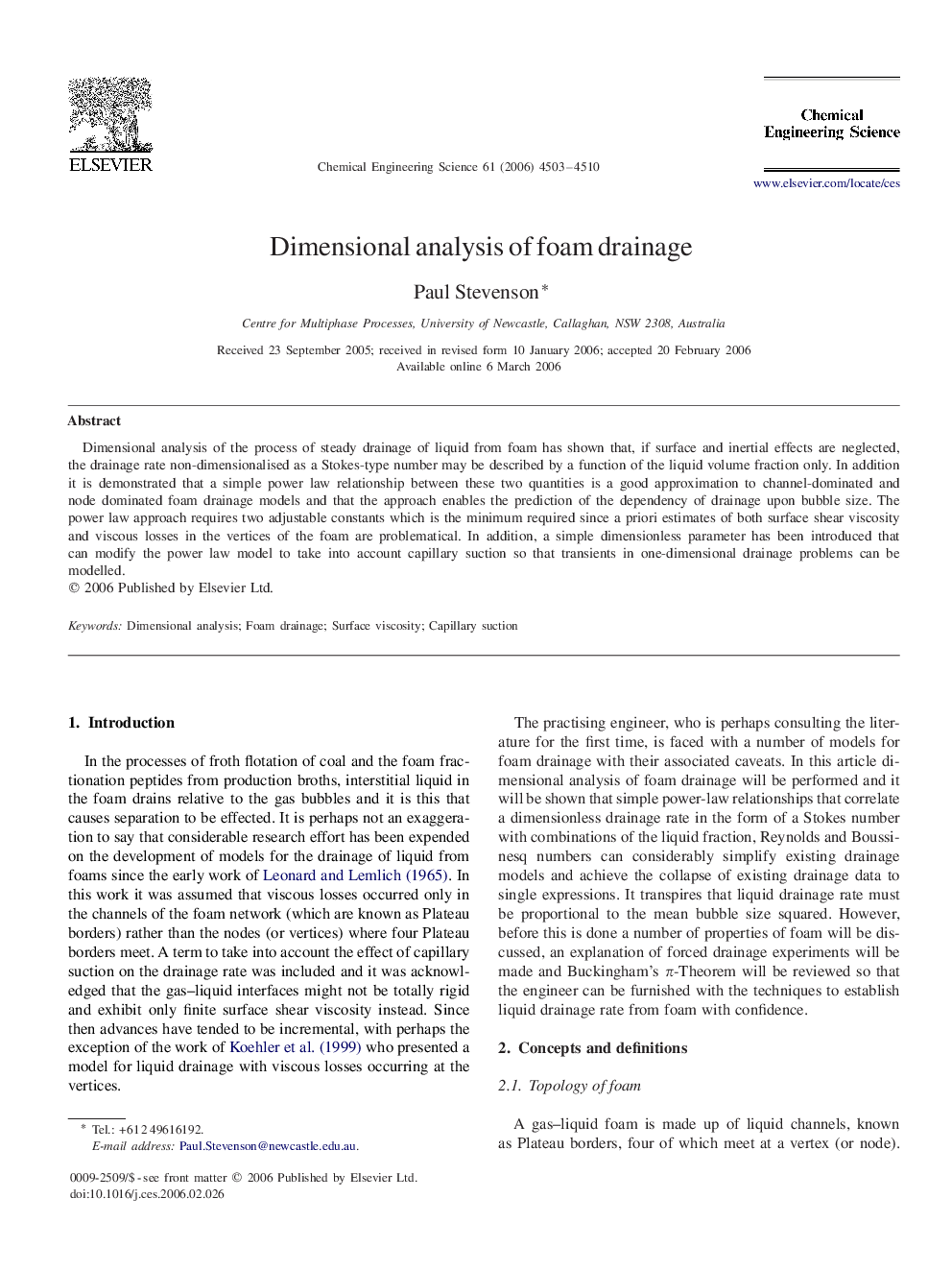| Article ID | Journal | Published Year | Pages | File Type |
|---|---|---|---|---|
| 158704 | Chemical Engineering Science | 2006 | 8 Pages |
Dimensional analysis of the process of steady drainage of liquid from foam has shown that, if surface and inertial effects are neglected, the drainage rate non-dimensionalised as a Stokes-type number may be described by a function of the liquid volume fraction only. In addition it is demonstrated that a simple power law relationship between these two quantities is a good approximation to channel-dominated and node dominated foam drainage models and that the approach enables the prediction of the dependency of drainage upon bubble size. The power law approach requires two adjustable constants which is the minimum required since a priori estimates of both surface shear viscosity and viscous losses in the vertices of the foam are problematical. In addition, a simple dimensionless parameter has been introduced that can modify the power law model to take into account capillary suction so that transients in one-dimensional drainage problems can be modelled.
